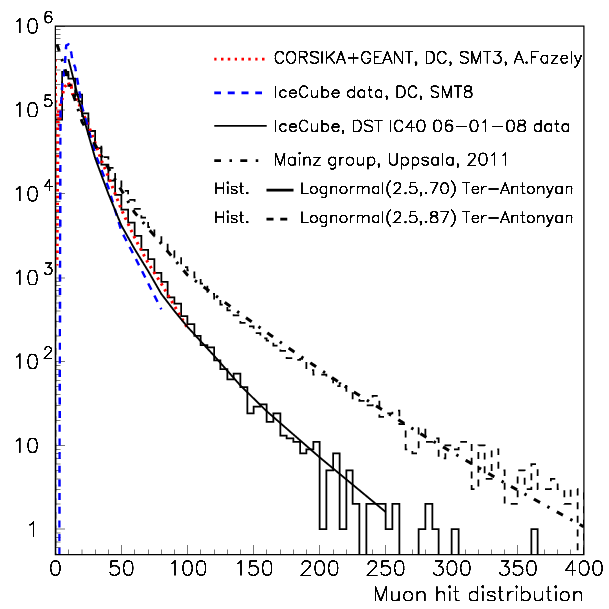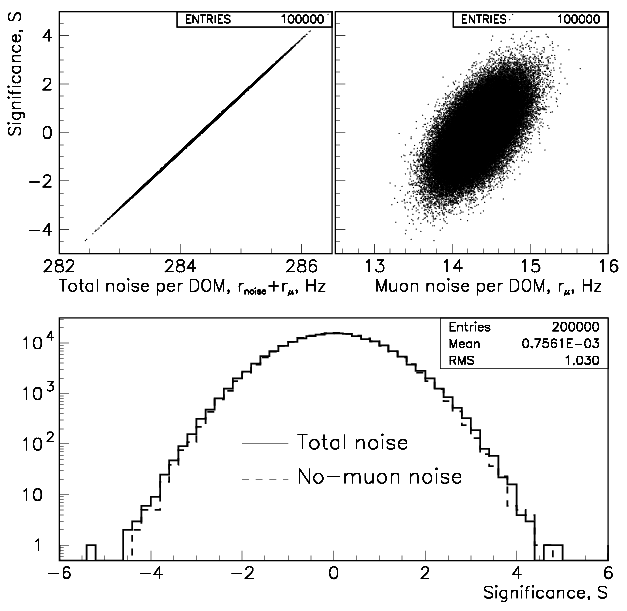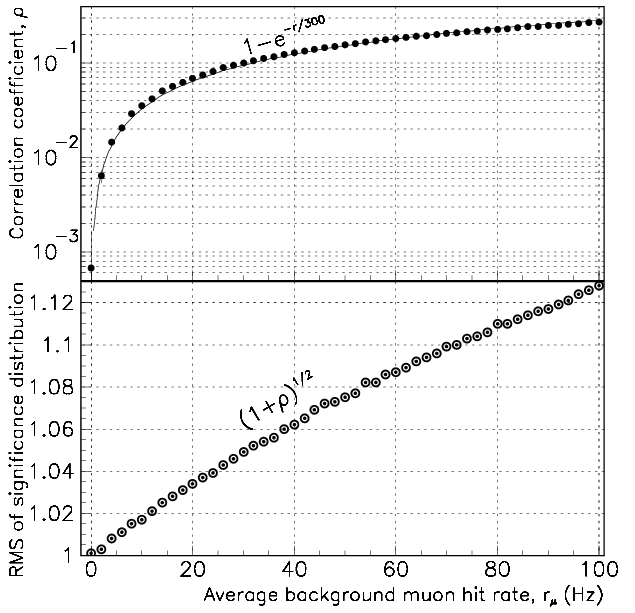-
Response I:

Comments I to the IceCube Internal Report: "Study of SN alarms ...", University of Mainz
201107001
-
Response II:

Comments II to the IceCube Internal Report:
201107001 (Discussion about DOM noise rate correlations)
- A.R. Fazely, R.M. Gunasingha., R.L. Imlay, K.D. Muhammad, S.V. Ter-Antonyan, and X. Xu
Search capability for $\eta\rightarrow\nu_{e,\tau},\bar{\nu}_{e,\tau}$ decays
in cubic-kilometer neutrino detectors, Phys. Rev. D 81, iss 11, 117101 (2010)/
available from arXiv:0902.3451 [hep-ex]
- Background muon intensity computations.
- DOM noise rate simulating FORTRAN code (sign_sim_mu)
taking into account background muon contribution.
Results are presented in
Response II and Fig.1 below.
- The simplest twin-DOM noise rate simulating FORTRAN code (Pair_DOMs)
for variable muon rates.
Correlations between total noise rates of two DOMs versus muon
noise rate are presented in Fig.3 below.
|




